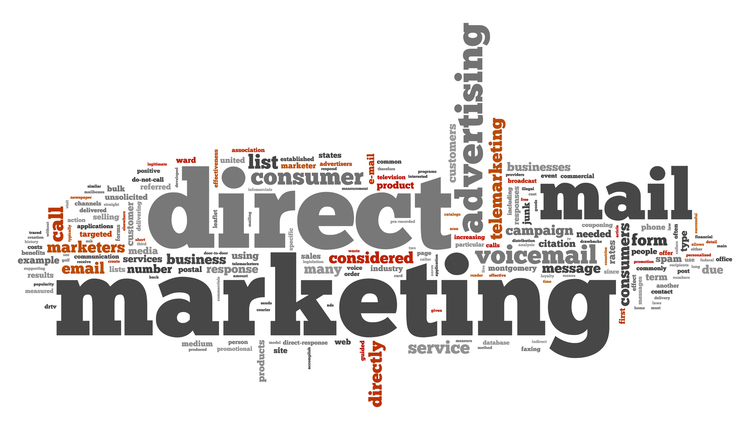The single most important aspect of direct mail is the mailing list. Obviously, it can't stand alone, but it carries the most sway in terms of the results of your campaign. A good mailing list will produce an excellent return. A bad list will torpedo your results.
But how do you know you are getting a good list and not a bad one? I will present you with three steps you can follow to ensure the list you buy is the right one for your business.
1) Choose How to Procure Your List
You have two basic options when compiling a mailing list:
1) Make your own list based on your current customers and prospects who have contacted you.
2) Get a list from a mailing list provider. Often you need to purchase these lists, but rarely you can get one for free through a promotion or a bonus.
Option 1 is clearly the less expensive route. The down side is that it takes some effort and dedication on your part to compile the list. Option 2 doesn't require much effort, but it almost always requires a monetary investment. Which one is right for you depends on your particular needs and the purpose of your direct mail campaign. You will know if Option 1 is possible for you and whether you are willing to put the time in to compile the list.
2) Target the Right Prospects
Often we think about marketing as "convincing." This is not a helpful thought process. It is better to think about marketing as "finding." A good marketing campaign simply finds the people who already want a product and presents them with an offer for that product. There is very little convincing involved. The prospect just needs to be shown why to choose you over the competition. In other words, you aren't trying to sell alcohol to the Temperance Society. You are simply finding the "Homer Simpsons" of the world and letting them know about your product. That's the difference. Targeting prospects who are already interested puts you at an advantage before you even begin.
Here's an example:
An iPhone repair business shouldn't send postcards to everyone in their local zip codes, because not everyone has an iPhone. Rather, they should see if they can find a mailing list of households that have purchased Apple products. These homes have prospects that are much more likely to be interested in the services they offer, and who also have the means to spend money on high-end electronic devices. That would be a list full of quality prospects, and it would have a good chance of generating results for the tutoring business.
3) Identify the Right List Type
There are basically 5 types of mailing lists to choose from. Let's take a look at each one
1) The House List
This is a list you create yourself (i.e. Option 1 above). It's comprised of current customers, past customers, and anyone that has contacted you previously. This list is full of high-quality prospects because everyone on it has already chosen your company or at least shown some interest. House lists are very effective and should be used often.
2) The Response List
This list includes individuals that have responded to other businesses similar to yours, or to product offers similar to yours. Like a house list, response lists are also full of high-quality prospects. You can get response lists from mailing list providers like magazines, private list companies, or direct mail providers. Although these prospects have not responded to you directly, they have shown interest in similar businesses, which means they are at least warm to your offer already.
3) The Targeted Demographic List
These lists are comprised of anyone you want to target! Demo lists let you target prospects by demographics like age, gender, geographic location, income level, and number of children present in the home. Analyze your current customers to find out what they have in common. Then, create a demo list that targets people with similar characteristics.
4) The Opt-In List
Opt-ins are great because the people on it ASKED to be on it. This makes them fertile marketing soil. Unfortunately, these lists are more on the pricey side. However, they can yield incredible ROI (Return On Investment), so they should not be neglected entirely.
5) The Segmented List
A segmented list is like a demo list on STEROIDS. Segmented lists target prospects by certain criteria, but they go WAY beyond traditional demographics. Some additional targeting options include spending and saving habits, reading preferences, vacation/travel patterns, and more. Even better, you can use the segmentation technology to analyze your current customer base, find the similarities, and build a list based on those common traits. Not all list providers offer this type of list. My company is one of them, but unfortunately I am prevented from disclosing the others. The price can range from "very expensive" to "very reasonable," so it is worth looking into. The company that created the technology doesn't allow their clients to print their name, but we can tell you all about them if you call our office and ask us - 1-800-628-1804.
The mailing list you use is absolutely crucial. It is well worth the time-investment to research and make sure you get a good one. Hopefully this article has helped clear up the selection process for you. Good luck and happy marketing!
Joy Gendusa is the founder and CEO of PostcardMania, a $20 million, full-service marketing company based in Clearwater, FL. She literally wrote the book on postcard marketing, and built her company from the ground up without any outside investment capital. Download her complete 95-Point Total Marketing Checklist today!
But how do you know you are getting a good list and not a bad one? I will present you with three steps you can follow to ensure the list you buy is the right one for your business.
1) Choose How to Procure Your List
You have two basic options when compiling a mailing list:
1) Make your own list based on your current customers and prospects who have contacted you.
2) Get a list from a mailing list provider. Often you need to purchase these lists, but rarely you can get one for free through a promotion or a bonus.
Option 1 is clearly the less expensive route. The down side is that it takes some effort and dedication on your part to compile the list. Option 2 doesn't require much effort, but it almost always requires a monetary investment. Which one is right for you depends on your particular needs and the purpose of your direct mail campaign. You will know if Option 1 is possible for you and whether you are willing to put the time in to compile the list.
2) Target the Right Prospects
Often we think about marketing as "convincing." This is not a helpful thought process. It is better to think about marketing as "finding." A good marketing campaign simply finds the people who already want a product and presents them with an offer for that product. There is very little convincing involved. The prospect just needs to be shown why to choose you over the competition. In other words, you aren't trying to sell alcohol to the Temperance Society. You are simply finding the "Homer Simpsons" of the world and letting them know about your product. That's the difference. Targeting prospects who are already interested puts you at an advantage before you even begin.
Here's an example:
An iPhone repair business shouldn't send postcards to everyone in their local zip codes, because not everyone has an iPhone. Rather, they should see if they can find a mailing list of households that have purchased Apple products. These homes have prospects that are much more likely to be interested in the services they offer, and who also have the means to spend money on high-end electronic devices. That would be a list full of quality prospects, and it would have a good chance of generating results for the tutoring business.
3) Identify the Right List Type
There are basically 5 types of mailing lists to choose from. Let's take a look at each one
1) The House List
This is a list you create yourself (i.e. Option 1 above). It's comprised of current customers, past customers, and anyone that has contacted you previously. This list is full of high-quality prospects because everyone on it has already chosen your company or at least shown some interest. House lists are very effective and should be used often.
2) The Response List
This list includes individuals that have responded to other businesses similar to yours, or to product offers similar to yours. Like a house list, response lists are also full of high-quality prospects. You can get response lists from mailing list providers like magazines, private list companies, or direct mail providers. Although these prospects have not responded to you directly, they have shown interest in similar businesses, which means they are at least warm to your offer already.
3) The Targeted Demographic List
These lists are comprised of anyone you want to target! Demo lists let you target prospects by demographics like age, gender, geographic location, income level, and number of children present in the home. Analyze your current customers to find out what they have in common. Then, create a demo list that targets people with similar characteristics.
4) The Opt-In List
Opt-ins are great because the people on it ASKED to be on it. This makes them fertile marketing soil. Unfortunately, these lists are more on the pricey side. However, they can yield incredible ROI (Return On Investment), so they should not be neglected entirely.
5) The Segmented List
A segmented list is like a demo list on STEROIDS. Segmented lists target prospects by certain criteria, but they go WAY beyond traditional demographics. Some additional targeting options include spending and saving habits, reading preferences, vacation/travel patterns, and more. Even better, you can use the segmentation technology to analyze your current customer base, find the similarities, and build a list based on those common traits. Not all list providers offer this type of list. My company is one of them, but unfortunately I am prevented from disclosing the others. The price can range from "very expensive" to "very reasonable," so it is worth looking into. The company that created the technology doesn't allow their clients to print their name, but we can tell you all about them if you call our office and ask us - 1-800-628-1804.
The mailing list you use is absolutely crucial. It is well worth the time-investment to research and make sure you get a good one. Hopefully this article has helped clear up the selection process for you. Good luck and happy marketing!
Joy Gendusa is the founder and CEO of PostcardMania, a $20 million, full-service marketing company based in Clearwater, FL. She literally wrote the book on postcard marketing, and built her company from the ground up without any outside investment capital. Download her complete 95-Point Total Marketing Checklist today!










